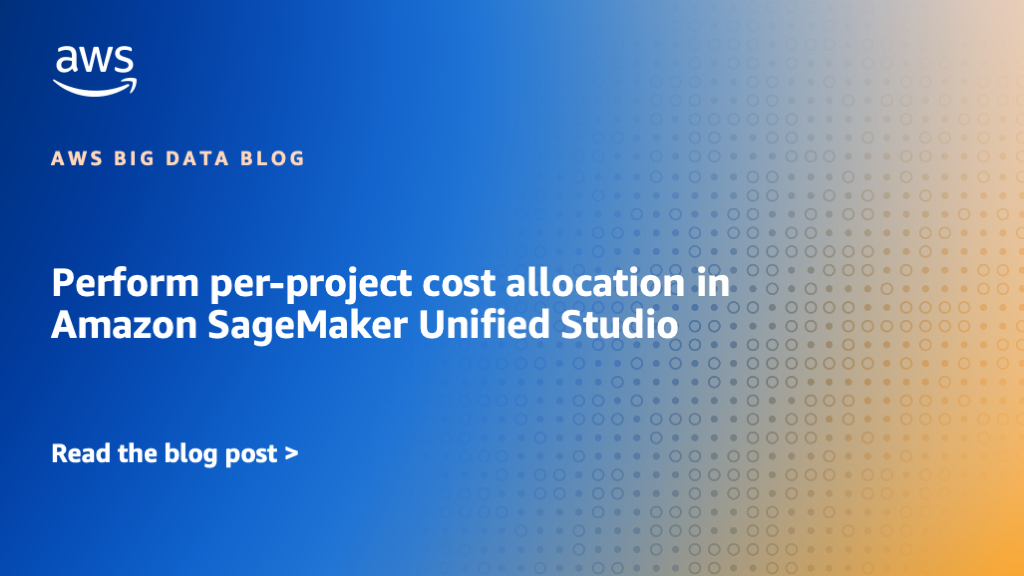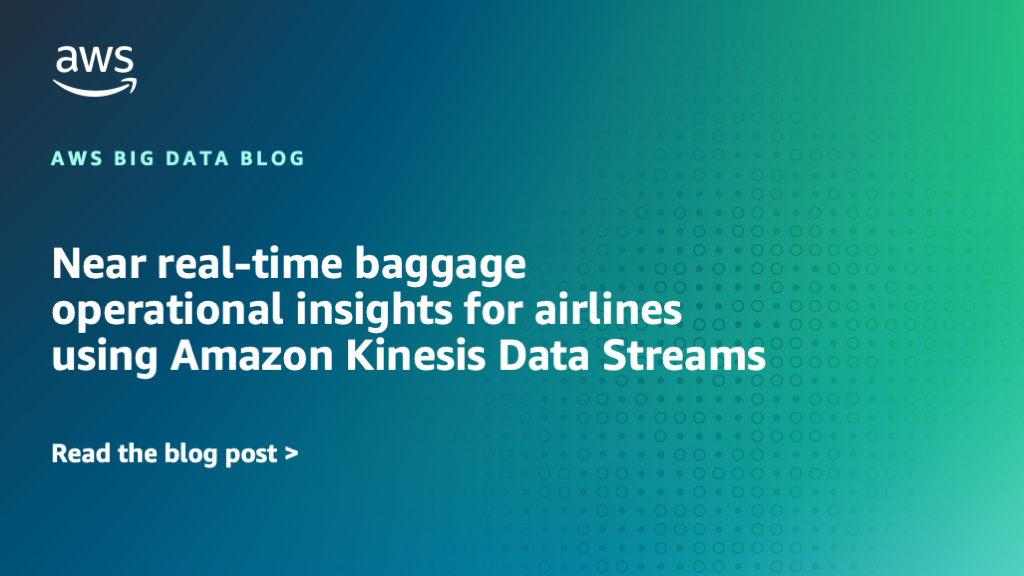AWS Big Data Blog
Category: Learning Levels
Scale your AWS Glue for Apache Spark jobs with R type, G.12X, and G.16X workers
This post demonstrates how AWS Glue R type, G.12X, and G.16X workers help you scale up your AWS Glue for Apache Spark jobs.
Orchestrate data processing jobs, querybooks, and notebooks using visual workflow experience in Amazon SageMaker
Today, we are excited to launch a new visual workflows builder in SageMaker Unified Studio. With the new visual workflow experience, you don’t need to code the Python DAGs manually. Instead, you can visually define the orchestration workflow in SageMaker Unified Studio, and the visual definition is automatically converted to a Python DAG definition that is supported in Airflow.This post demonstrates the new visual workflow experience in SageMaker Unified Studio.
Perform per-project cost allocation in Amazon SageMaker Unified Studio
Amazon SageMaker Unified Studio enables per-project cost allocation through resource tagging, allowing organizations to track and manage costs across different projects and domains effectively. This post demonstrates how to implement cost tracking using AWS Billing and Cost Management tools, including Cost Explorer and Data Exports, to help finance and business analysts follow FinOps best practices for controlling cloud infrastructure costs.
Near real-time baggage operational insights for airlines using Amazon Kinesis Data Streams
This post explores a framework developed by IBM to modernize baggage analytics using AWS managed services like Amazon Kinesis Data Streams, DynamoDB Streams, and other AWS services within a serverless architecture. The solution enables near real-time baggage operational insights for airlines, delivering cost savings, enhanced scalability, and improved performance while providing better security and operational efficiency to meet evolving airline needs.
Overcome your Kafka Connect challenges with Amazon Data Firehose
We’re happy to announce a new feature in the Amazon Data Firehose integration with Amazon MSK. You can now specify the Firehose stream to either read from the earliest position on the Kafka topic or from a custom timestamp to begin reading from your MSK topic. In this post of this series, we focus on managed data delivery from Kafka to your data lake.
How Stifel built a modern data platform using AWS Glue and an event-driven domain architecture
In this post, we show you how Stifel implemented a modern data platform using AWS services and open data standards, building an event-driven architecture for domain data products while centralizing the metadata to facilitate discovery and sharing of data products.
Build conversational AI search with Amazon OpenSearch Service
Amazon OpenSearch Service is a versatile search and analytics tool. In this post, we explore conversational search, its architecture, and various ways to implement it.
Enhance data ingestion performance in Amazon Redshift with concurrent inserts
Amazon Redshift employs columnar storage for database tables, reducing overall disk I/O requirements. This storage method significantly improves analytic query performance by minimizing data read during queries. This post showcases the key improvements in Amazon Redshift concurrent data ingestion operations.
Amazon OpenSearch Service 101: Create your first search application with OpenSearch
In this post, we walk you through a search application building process using Amazon OpenSearch Service. Whether you’re a developer new to search or looking to understand OpenSearch fundamentals, this hands-on post shows you how to build a search application from scratch—starting with the initial setup; diving into core components such as indexing, querying, result presentation; and culminating in the execution of your first search query.
Implement secure hybrid and multicloud log ingestion with Amazon OpenSearch Ingestion
In this post, we demonstrate how to configure Fluent Bit, a fast and flexible log processor and router supported by various operating systems, to securely send logs from any environment to OpenSearch Ingestion using IAM Roles Anywhere.









